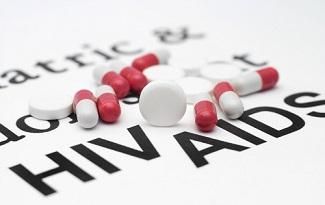Improving HIV Life Expectancy with Antiretroviral Therapy
A new study assessed the life expectancy gains for those adults with HIV and being treated with antiretroviral therapy living in Latin America and the Caribbean.

Worldwide, there are currently 38 million people living with Human Immunodeficiency Virus (HIV) or Acquired Immunodeficiency Syndrome (AIDS). In 2019, it was estimated that 1.7 million people acquired HIV, which reveals a 23% decline in new infections since 2010. In terms of treatment, it is estimated that by the end of 2019, 25.4 million people living with HIV were be treated with antiretroviral therapy (ART).
With those statistics though, what is the gain in life expectancy for those living with HIV? A new study published in The Lancet assessed the life expectancy gains for those adults with HIV and being treated with antiretroviral therapy, living in Latin America and the Caribbean.
Utilizing a multi-site retrospective cohort study. Studying those with HIV aged 16 years and older, and treated with ART between January 2003 and December 2017 living in Caribbean, Central and South America. The research team utilized network data for HIV epidemiology (CCASAnet) from sites in Argentina, Brazil, Chile, Haiti, Honduras, Mexico, and Peru.
The authors noted that after performing a life expectancy estimate across three areas, “30 688 people with HIV were included in the study; 17,491 (57·0%) were from the Haiti site and 13,197 (43·0%) were from all other sites. There were 2637 deaths during the study period: 1470 in Haiti and 1167 in other sites. Crude and weighted mortality rates decreased among all age groups over calendar eras. From 2003–08 to 2013–17, overall life expectancy for people with HIV at age 20 years increased from 13·9 years (95% CI 12·5–15·2) to 61·2 years (59·0–63·4) in Haiti and from 31·0 years (29·3–32·8) to 69·5 years (67·2–71·8) in other sites. Life expectancies at the end of the study period were within 10 years of those of the general population (69·9 years in Haiti and 78·0 years in all other sites in 2018).”
Interestingly, those started on ART with a non-nucleoside reverse transcriptase inhibitor were in the majority. During the study period, there were 2,637 deaths and 10,328 people lost to follow-up across all sites. To see life expectancy increase 20 years for those on ART is impressive and reinforces the importance of access to such treatments.
Moreover, the authors noted that in Haiti, women with HIV had a longer life expectancy than men with HIV. An important piece to this though, is that while life expectancy improved among those with HIV and receiving ART within these areas, there are still persistent disparities. These disparities are directly tied to social determinants of health, such as socioeconomic status, housing instability, and stigma. As the authors noted, “notable disparities in life expectancy remain or are increasing among people with HIV by demographic and clinical characteristics at ART initiation (ie, sex and HIV transmission risk factors, history of tuberculosis, and level of education).”
Overall, this study emphasizes the importance of ART, but the truth is that access and continued health disparities will always pose a threat to the health of people. Continued access to ART and support for those living with HIV/AIDS is a critical need.
2 Commerce Drive
Cranbury, NJ 08512
All rights reserved.
